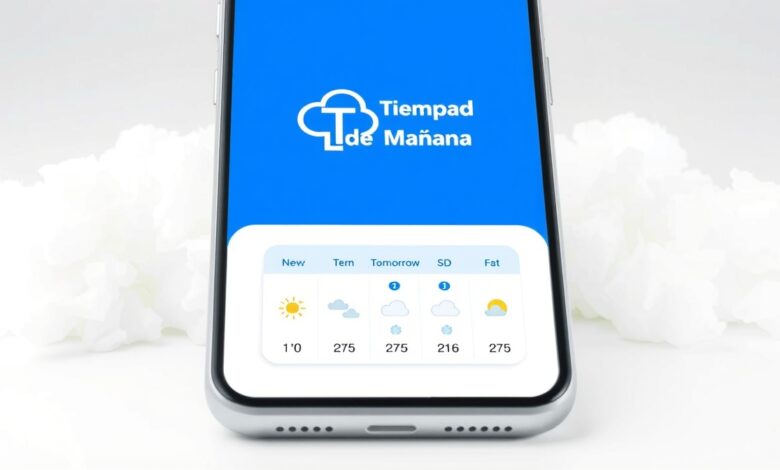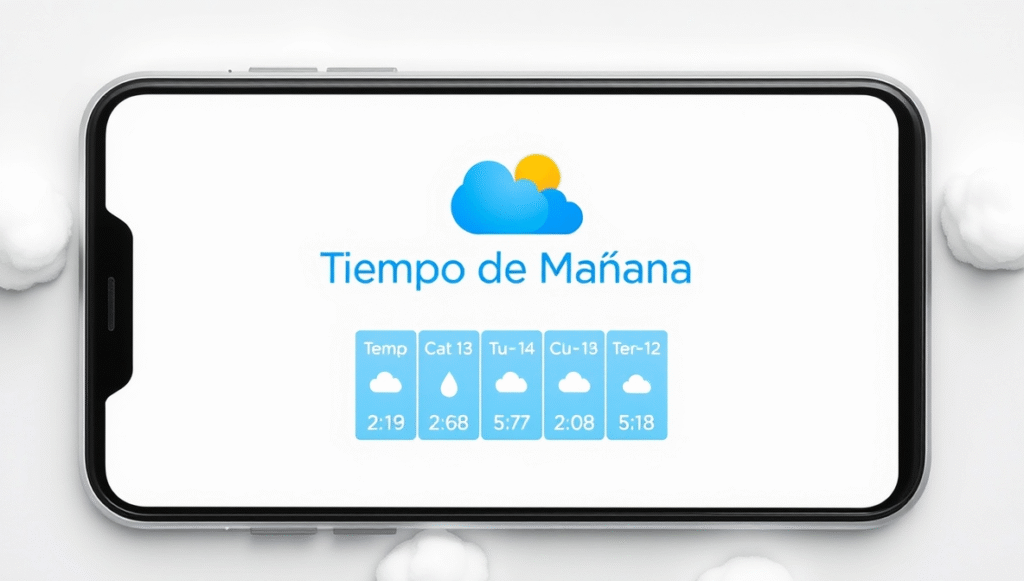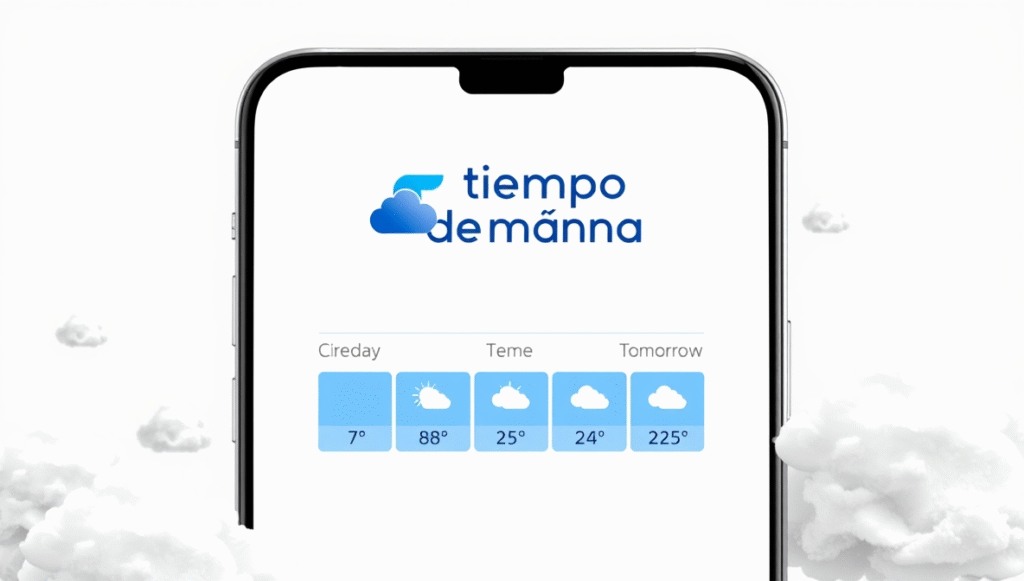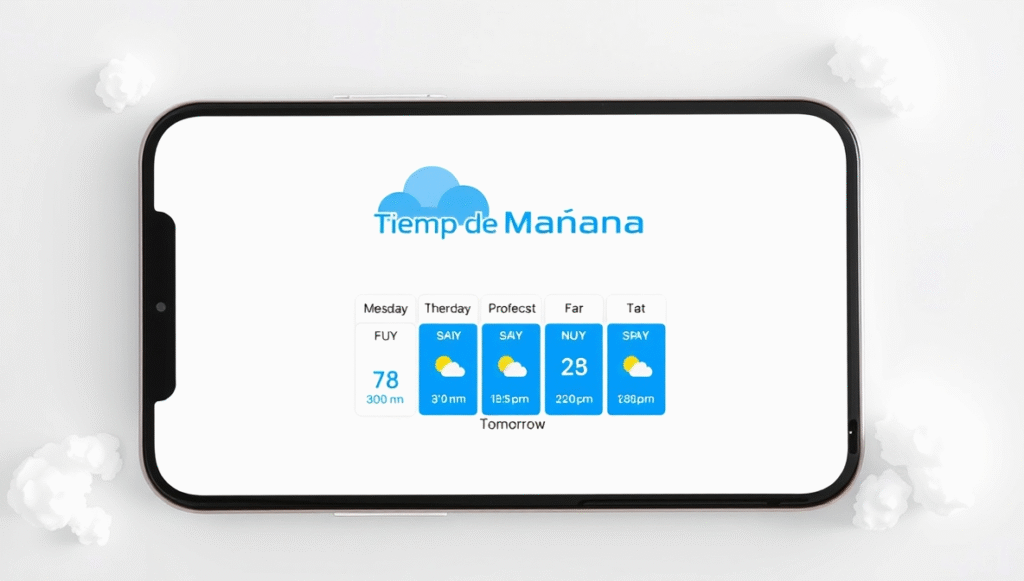Tiempo de Mañana What You Need to Know About Tomorrow’s Weather

Tiempo de Mañana means “weather for tomorrow,” and it helps people plan their day before it even starts. When you check tiempo de mañana, you can know if it will be sunny, rainy, or cloudy, and get ready for what’s coming. Whether you are going to school, work, or a trip, knowing the tiempo de mañana makes life much easier. It helps you dress right, plan your travel, and even choose the best time to go out. Weather can change fast, so staying updated on tiempo de mañana is a smart and simple way to avoid surprises.
In many places, tiempo de mañana updates every few hours to show the latest changes in temperature, wind, and rain. With technology today, you can check tiempo de mañana online, on your phone, or by watching TV news. It’s not just about the temperature — it’s also about air quality, humidity, and sunrise or sunset times. Understanding tiempo de mañana helps you enjoy your day safely and comfortably. In this blog, we’ll talk about how to read weather forecasts, why tiempo de mañana matters, and how it can make your daily routine smoother.

What Does Tiempo de Mañana Mean
Tiempo de mañana is a Spanish phrase that simply means “tomorrow’s weather.” It tells you what the weather will look like the next day. For example, if you see that the tiempo de mañana is sunny, you might wear light clothes and plan an outdoor activity. But if the forecast shows rain, you can carry an umbrella or change your plans. Tiempo de mañana is more than just temperature—it includes wind, humidity, air pressure, and even sunrise and sunset times. It helps people know what to expect before the day begins.
Why Checking Tiempo de Mañana Is Important
Knowing tiempo de mañana is important because it helps people prepare for their daily routines. Weather affects everything we do—from how we dress to how we travel. When you know the tiempo de mañana, you can stay safe and avoid problems. For example, if it will rain heavily, you can drive carefully or stay indoors. Farmers use tiempo de mañana to protect their crops, fishermen check it before going out to sea, and travelers plan their routes according to weather conditions.
Weather can also affect our mood and energy. Sunny days often make people feel happy and active, while cloudy or rainy days can make some feel sleepy or slow. By knowing the tiempo de mañana, you can plan your activities to match your energy and comfort. It helps you stay one step ahead of nature.
How to Read Tiempo de Mañana Easily
Reading a weather forecast might seem difficult at first, but it is actually very simple once you understand the symbols. Tiempo de mañana reports usually show icons like a sun, a cloud, or raindrops. The sun means clear weather, clouds mean it might be cloudy or partly cloudy, and raindrops mean rain is coming. You might also see numbers like “25°C” or “77°F.” This shows the temperature.
There are two types of temperature listed: the high and the low. The high temperature tells you how hot it will get during the day, and the low tells you how cold it might get at night. Wind speed and direction are also shown, telling you how strong the wind will be. A gentle wind is comfortable, but a strong wind can make the day feel colder. Humidity is another important part of tiempo de mañana. It tells you how much moisture is in the air. High humidity can make the weather feel sticky or heavy.
Best Apps and Websites to Check Tiempo de Mañana
Today, checking tiempo de mañana is easier than ever before. Many websites and apps give accurate and updated weather reports. Some of the best options include The Weather Channel, AccuWeather, and Google Weather. These platforms give you information for your city or any place in the world. They show temperature, wind, rain chances, and more.
Smartphones also come with built-in weather apps. You can set your location, and it will show the tiempo de mañana right on your home screen. Many people also like to use weather widgets for quick updates. Another great way to check tiempo de mañana is by watching local news or weather channels on TV. They often share forecasts with expert explanations. No matter where you are, it’s always good to compare two or three sources for the most accurate forecast.
How Tiempo de Mañana Helps You Plan Your Day
Tiempo de mañana helps you plan your daily schedule better. For example, if you know tomorrow will be hot and sunny, you can plan to spend time outdoors, have a picnic, or go to the beach. But if the forecast says it will rain, you might stay home, work indoors, or bring a jacket.
Schools and offices also use tiempo de mañana to plan activities. If heavy rain or snow is expected, schools might close for safety reasons. Travel companies check it before scheduling flights or road trips. Even athletes and event planners look at tiempo de mañana before deciding on outdoor games or shows. Knowing the weather helps everyone make smart choices and avoid last-minute surprises.

Understanding Weather Symbols in Tiempo de Mañana
Weather forecasts use easy symbols so that everyone can understand them quickly. A big yellow sun means clear skies and warm weather. A cloud with a small sun peeking out means partly cloudy. A cloud with raindrops means light rain, and one with lightning means thunderstorms. A snowflake means it will snow, and a wind swirl means strong winds are coming.
Sometimes, tiempo de mañana also shows colors or numbers for warnings. For example, red might mean high heat, blue for cold, and orange for strong storms. When you understand these symbols, reading weather forecasts becomes quick and simple. It’s like learning a language that helps you talk with nature.
Tiempo de Mañana Around the World: Different Climates Explained
Tiempo de mañana can look very different depending on where you live. In tropical countries, you might see rain almost every afternoon, while in cold countries, snow and ice are common. Near the beach, tiempo de mañana often changes fast because of sea winds. In mountain areas, mornings can be cold and afternoons sunny.
Each place has its own weather patterns, and tiempo de mañana helps people understand them. For example, Spain and Mexico have warm, dry summers and mild winters, while northern Europe has cooler, wetter weather most of the year. Understanding the local tiempo de mañana helps travelers pack the right clothes and stay safe during trips.
Simple Tips to Stay Safe During Bad Weather Tomorrow
Bad weather can happen suddenly, so it’s important to stay alert. If the tiempo de mañana shows thunderstorms, it’s best to stay indoors and unplug electronic devices. During heavy rain, avoid driving through flooded roads. If strong winds are expected, secure things outside your home so they don’t blow away.
In hot weather, drink water often and avoid staying under the sun for too long. In cold weather, wear layers of warm clothes and cover your head and hands. These small steps can help you stay healthy and safe. Tiempo de mañana gives you time to prepare for these conditions so that you don’t get caught by surprise.
How Farmers and Travelers Use Tiempo de Mañana
Farmers depend on tiempo de mañana to plan their work. They need to know if it will rain for watering crops or if strong winds might damage plants. A good forecast helps them save time and protect their harvest. Travelers also use tiempo de mañana to plan vacations and road trips. Knowing tomorrow’s weather helps them choose what to pack and what places to visit.
For example, if you plan to visit a beach, you’ll want sunny weather. But if you plan to go hiking, cloudy weather might be better so it’s not too hot. Tiempo de mañana helps people make the best of every day, no matter where they are going.

How Technology Predicts Tiempo de Mañana
Have you ever wondered how scientists know the tiempo de mañana? They use satellites, radar, and weather stations around the world to study air, clouds, and wind. Computers then use this information to make predictions about what the weather will be like tomorrow.
Meteorologists are weather experts who read this data and make forecasts. They look at maps, charts, and models to predict rain, temperature, and storms. Thanks to modern technology, tiempo de mañana has become more accurate and reliable than ever before.
Making Tiempo de Mañana Part of Your Routine
Checking tiempo de mañana should be part of your daily habit. Just like you brush your teeth or check your messages, take one minute to look at tomorrow’s weather. It helps you decide what to wear, when to leave home, or even what to eat. For example, if tomorrow will be cold, you might cook warm soup; if it’s hot, you might prefer ice cream.
You can set reminders or add weather widgets to your phone for quick updates. The more you check tiempo de mañana, the better you get at planning your days. It’s a simple habit that saves time, money, and stress.
Conclusion
Tiempo de mañana is not just a weather report—it’s a helpful tool that makes life easier. It guides you through your day, helps you prepare for different situations, and keeps you safe. Whether you are a student, a traveler, or a worker, knowing the tiempo de mañana gives you control and confidence. So, make it a part of your daily routine and enjoy your day with no weather surprises.
FAQs
What does tiempo de mañana mean?
Tiempo de mañana means “tomorrow’s weather” in Spanish. It tells you what the weather will be like the next day.
Why should I check tiempo de mañana every day?
Checking tiempo de mañana helps you plan your clothes, travel, and activities safely.
How can I know tiempo de mañana for my city?
You can check tiempo de mañana on weather apps, Google, or TV news channels for your local area.




